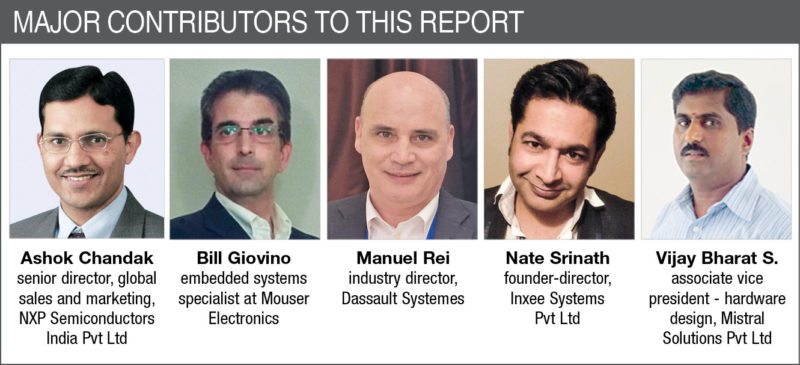Software is king
Most of the latest processing techniques are possible thanks to enhancements in software content and programs. “One of the most popular video-processing techniques, namely, video analytics, is implemented via software,” says Bharat. “Most media-processing engines are supported with video accelerators, encode and decode engines,” he adds.
Code, and decode the code. Incremental innovation is what drives codecs, says Chandak.
Bharat adds, “Video encode and decode are implemented using H.264, Moving Picture Experts Group 2 and 4 standards. Audio encode and decode are implemented using MP3, Windows Media Audio, Advanced Audio Coding standard techniques. H.265 and lossy video compression are some of the new optimisation techniques we have seen in the past year.”
Bharat goes on to add, “There is also a demand for very low latency with multiple parallel instances for encoding and decoding. Current media processors are able to receive or transmit multiple video inputs/outputs in different interface formats such as camera serial interface, display serial interface (DSI) and 8/16/24/32-bit parallel video.”
More power, lesser consumption
All devices are expected to work for at least a day, without the need to charge these. No wonder then that media processors are being designed to be as power efficient as possible. There is a slow shift to battery-operated devices, due to reduced power consumption and ease of use. But with these, demand on performance of a media processor only increases, opines Chandak.
Also, with miniature displays coming up, power and thermal dissipation is a challenge in itself, feels Bharat.
“There is a clear intent to simplify the design to reduce part-count and lower power consumption,” adds Giovino.
Connectivity, security and scalability
Connection, intelligence and smartness are the three key elements, according to Chandak. Everything is getting smart and connected, and everything needs to be secure. There is a clear intent to introduce data security at hardware level, and more stringent ones for every line of software that goes into the processor.

Srinath says, “Every device needs to have a layer of authentication built-in to prevent rogue access. With proper authentication, a server can easily perform remote software upgrades over any network, on its target devices.”
“There are three to four levels of security layers on each process like read-only memory code security, data pass through the encryption engine, software layer security and pass key based security,” pitches in Bharat.
Scalability is on every designer’s mind. With technology progressing at a rapid pace, it is very important to plan for the future, to not be left behind. A media processor must have hardware logic, so that processing done could be taken to the outside world. Today’s hardware must be able to support software upgrades for at least five years. Chandak adds, “Scalability of processors would also lead to a greener environment and lower footprint.”
The IoT influence. In Rei’s opinion, influence is indirect with the impact being in the amount of data to be dealt with.
Chandak says, “A media processor must have the required hardware logic to handle the load, while these can offload processing to the outside world.”
For this, these would need to support the IoT-supported communication media, which may not be viable. In such cases, designers may have to work around with external controllers, feels Bharat.
With cloud based processing, it is important to remember that it is good for latency-insensitive tasks, but not for real-time purposes, cautions Srinath.

What you can expect five years from now
The technology we have today is fantastic, feels Rei. The functions and support these offer would have been unimaginable five years ago.
“A design technology in new media processors to look forward to is a built-in hardware engine with basic video analytics like front object detection, danger zone detection, road crossing, road divider and built-in audio encode/decode engine,” quips in Bharat.
Rei continues, “For the moment, what we see in prototype is the ability to see data in different ways. It is a little too early to reasonably talk about what we can expect in the future. Certainly, the way we visualise things is going to change. But, what we do know is that we already have the technology and capability.” It is about putting things together and innovating.
Priya Ravindran was working as a technical journalist at EFY till recently










